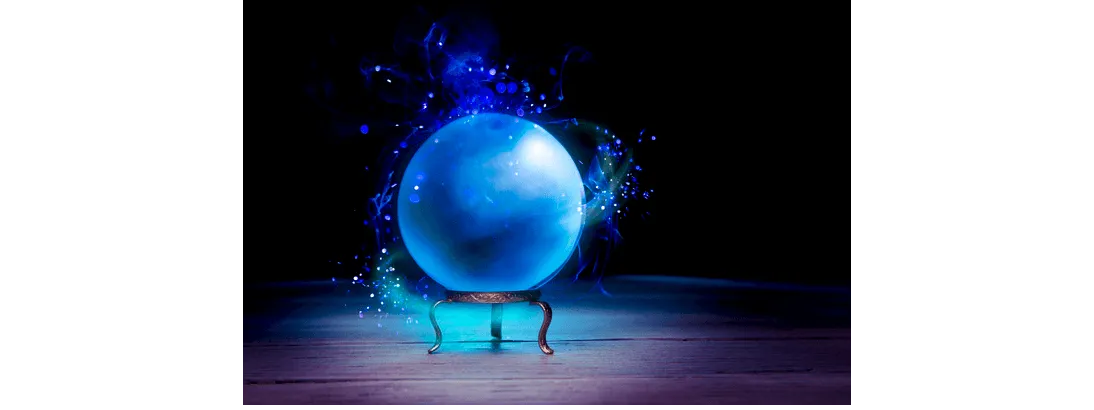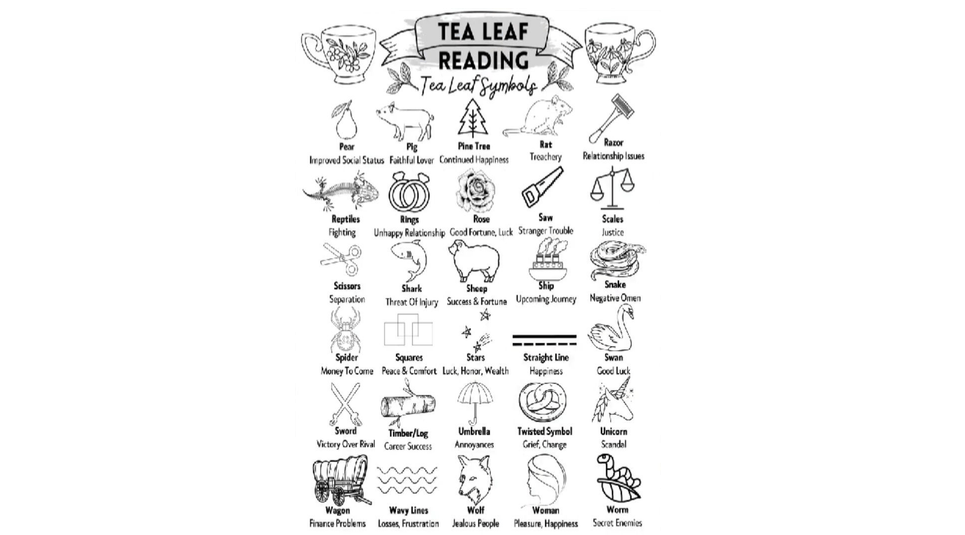
Whispers of Destiny

Chapter 1
Tesseography
Tasseography, is believed to have been around for nearly as long as there has been tea. While tea leaves are traditionally used in tasseography, the art can be practiced using coffee grounds or wine sediment.
Before you make your tea with the intention of reading the leaves, you need to choose the proper tea for the job. Loose tea is highly recommended rather than cutting open a tea bag and using the tea inside. This is because loose tea leaves are larger than the leaves used in tea bags -- the larger leaves are more suited to forming recognizable symbols and figures at the bottom of a teacup. Avoid using teas with pieces of fruit or flowers as they will obstruct the leaves you need to read.
Also, when choosing a cup, a white or light-colored cup works best so that the outlines and dots of the tea leaves can be clearly seen.
Preparing your tea
Making a cup of tea with the intention of reading the leaves is about the simplest cup you’ll ever make. Simply choose your loose-leaf tea -- any black, green, or oolong tea will do -- and place a teaspoon of the leaves directly into your cup. Add your hot water and let the leaves steep for a few minutes. Leave the tea in the cup.
After drinking the tea and leaving only a small amount of liquid in the bottom of the cup, along with the leaves, the following ritual should be observed:
Holding the cup in their left hand, the querent slowly swirls the teacup from left to right. The person who is seeking answers to their questions must be the person who does this.
Still using the left hand, invert the cup onto the saucer. Leave it upside down for around a minute.
Turn the cup right side up, positioning the handle of the cup due south. Inside the cup, you’ll see tea leaves stuck to the cup in various places and in a variety of shapes.
.png)

Tea leaf Posistions
The handle. The teacup handle is the energy conduit that connects the physical and abstract realm and is the “south” point of the compass. It represents the querent -- in astrology, the fourth house, which governs home and family, is also located in this position at the base of the astrological chart. Tea leaves near the handle can represent events relative to the querent’s immediate surroundings; leaves directly across from the handle can symbolize external issues and outside influences. Leaves nearest the handle represent the greatest chance of being fulfilled.
The rim. This part of the cup represents the present, so leaves in this area indicate a more immediate time frame.
The sides. This part of the cup represents the near future, events that are not immediate but not too far away.
The bottom. The bottom of the cup represents the distant future.
Time to Read the Tea Leaves
At this point, the reader will carefully observe the leaves in the cup, gently turning it to get a good look at the leaves from all angles. If at first this looks like… well, like a bunch of wet tea leaves stuck to the inside of your cup, don’t give up! Reading tea leaves can seem daunting to a beginner, but with practice, you’ll begin to get the hang of it.
In general, readers are studying the leaves to look for patterns, symbols, lines, figures. Remember, the position of the leaves in the cup is important to the strength of their meaning. A bad omen can be overshadowed by a good omen in a stronger position in the cup -- and vice versa.
When it comes to symbols, there are generally five types: animals, mythical beings, objects, letters, and numbers. Their proximity to one another can also impact the meaning. Letters, lines, and dots also have import. Again, this is an ancient art that takes practice to master. Many tasseographers rely on their instincts, having seen tea leaves in so many variations.
Tasseography experts say that the answers already lie inside you, it’s the practice of opening your mind.


Tea Leaf Reading Chart
Anchor: prosperity in business and a stable romantic relation. However, if the symbol is cloudy, then it could mean the opposite.
Birds: good luck, possibly a good journey
Butterfly: success and pleasure
Circles: expect money or presents -- bigger circles mean more, smaller circles less
Clover: very good luck, happiness and prosperity
Cow: prosperity
Cross: trouble, delay or death
Dragon: large and sudden changes
Fish: good news from another country
Hammer: challenges overcome
Heart: good things to come, such as money (if surrounded by dots) or marriage (if with a ring)
House: business success
Knife: disaster met through fighting and hatred
Lines: journey, and the direction of the journey (when reading with nearby symbols); wavy lines mean difficult journeys; straight lines can also mean peace, happiness and a long life
Mountain: a powerful friend or, if many mountains, powerful enemies
Mushroom: sudden separation of lovers following a fight
Pear: wealth, social status, possibly a financially beneficial business move or marriage
Pig: a faithful lover but jealous friends
Rabbit: success in a city
Reptile: arguments
